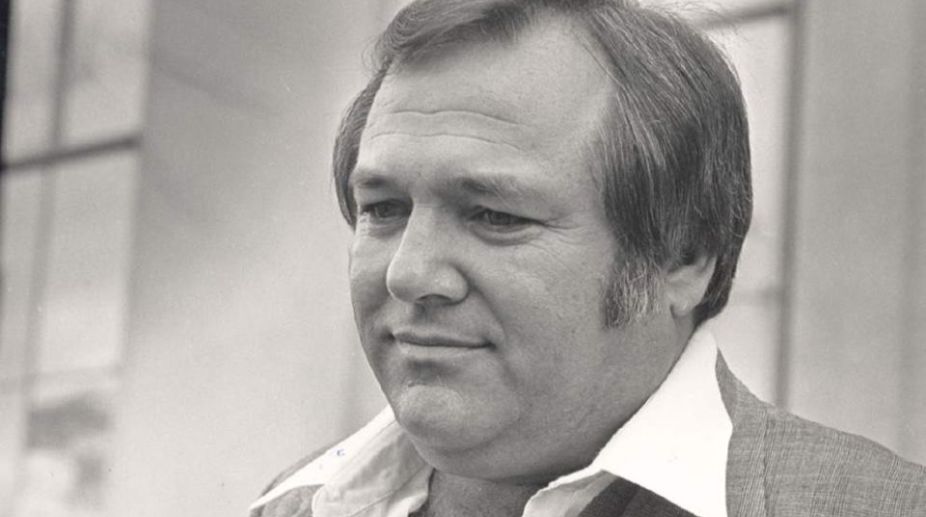Tom Cruise and Russian socialite Elsina Khayrova confirm relationship
Hollywood star Tom Cruise and Russian socialite Elsina Khayrova make their relationship official after two months of speculation. Get the latest details on their budding romance.

Barry Seal (Photo: Facebook)
Hollywood screenwriters toil their lives away trying to come up with the next crazy, catchy story to pitch. Yet, sometimes, history does the work for them.
Tom Cruise’s latest vehicle American Made, directed by Doug Liman, sees the A-lister play the infamous Barry Seal — a pilot who became a drug smuggler, who in turn became an informant, finding himself at the centre of the Iran-Contra scandal of Ronald Reagan’s era.
Seal’s love of flying blossomed early; he took his first solo flight at the age of 15, before gaining a pilot’s licence at 16, earning money by towing advertising banners.
Advertisement
After serving in the Louisiana Army National Guard and Army Reserve, he joined Trans World Airlines in 1968 as a flight engineer, before becoming one of the youngest command pilots in the entire fleet.
According to his wife Deborah Seal, he became involved in drug smuggling in 1975. During the early 1980s, he developed a close relationship with the Medellin Cartel, whose leadership included Pablo Escobar. It was then that he moved his operations from his home state of Louisiana to an airstrip in rural west Arkansas. In 1983, however, Seal was caught in Fort Lauderdale, Florida, as he tried to smuggle a shipment of Quaaludes into the country.
By his own admission, he had by then flown more than 100 flights of 600 to 1200 pounds of cocaine each, equating to between $3bn and $5 billion worth of drugs into the US. He was sentenced to 10 years in prison. Former FBI agent Del Hahn, however, describes how Seal was desperate to avoid jail time; after his offer to turn snitch was turned down multiple times, he eventually flew straight to DC and the office of the vice president’s drug task force.
They sent him to the Drug Enforcement Administration. Seal was soon enlisted into a sting operation. The aim?
The Reagan administration was keen to see the Contras militia overthrow the revolutionary Sandinista government, which had installed itself in Nicaragua; Seal claimed the Sandinistas had made a deal with the Medellin Cartel, and proof of such could lend justification to the US’s support of the Contras, despite accusations of human rights violations amongst the counter-revolutionaries.
And so, the pilot flew into an airstrip in Nicaragua with CIA cameras installed on his plane, snapping pictures, which showed Escobar and several other members of the Medellin Cartel loading kilos of cocaine onto a plane with the aid of Sandinista soldiers.
Seal claimed that one of the men present, Federico Vaughan, was an associate of Tomas Borge of the interior ministry of Nicaragua.
However, Wall Street Journal reporter Jonathan Kwitny threw doubt over Seal’s accusations, claiming there was no evidence tying any Nicaraguan officials to the drug shipment. Others, however, jumped on Seal’s testimony. And that would be his undoing.
A front page story in The Washington Times by Edmond Jacoby about links between Sandinista officials and the Medellin Cartel discussed Seal’s mission and appeared to out him as a government agent. The DEA cut him loose, but that also left him vulnerable.
He was later arrested by the FBI in Louisiana, though only received six months supervised probation; a condition of his sentence was that he spend every night, from 6pm to 6am, at the Salvation Army halfway house in Baton Rouge.
It was outside of this building that he was shot and killed on 19 February 1986.
A friend said of the incident, “I saw Barry get killed from the window of the Belmont hotel coffee shop.
The killers were both out of the car, one on either side, but I only saw one shoot, because Barry saw it coming and just put his head down on the steering column.” Colombian assassins sent by the Medellin Cartel were apprehended trying to leave Louisiana soon after Seal’s murder.
Three of the men were convicted of first degree murder and sentenced to life in prison without parole. However, some believe the CIA was behind the killing.
After his death, Louisiana attorney general William Guste hand-delivered a letter to US Attorney General Edwin Meese in protest at the government’s failure to protect Seal.
Though he called him a “heinous criminal”, Guste added, “At the same time, for his own purposes, he had made himself an extremely valuable witness and informant in the country’s fight against illegal drugs.”
“Barry Seal’s murder suggests the need for an in-depth but rapid investigation into a number of areas. Why was such an important witness not given protection whether he wanted it or not?” There’s still no real answer to this question today.
(The independent)
Advertisement